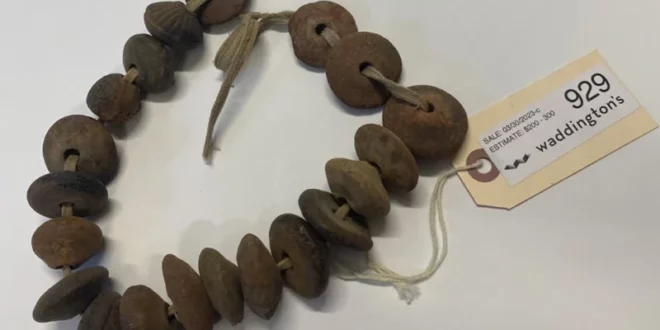Peru and Canada work together to stop virtual auction of ancient artifacts
Peruvian and Canadian officials have successfully prevented the virtual auction of 20 ancient artifacts from Peru’s pre-Hispanic Chancay culture. The country’s Foreign Ministry in Lima released a statement on Saturday announcing that the Peruvian embassy in Canada and the Consulate General in Toronto had taken joint action to stop the sale of these pieces.
The Canadian auction company, Waddington’s had obtained the ancient artifacts through an online portal called The Saleroom. The planned sale was brought to the attention of Peru’s Culture Ministry, which worked alongside Canadian officials to put a stop to the auction.
Significance of the Chancay culture
One of the prominent objects among the twenty pieces was a necklace made of seeds from the ancient Chancay culture, which is known for its artistic achievements. This pre-Incan culture thrived in the valleys of central coast Peru between 1200 and 1470.
The Chancay people typically used materials such as textiles, ceramics, and metals to create decorative artifacts. They also engaged in agricultural activities, such as farming, fishing, and irrigation.
Joint action taken by Peru and Canada to preserve cultural heritage
Peru is committed to preserving cultural heritage and has been working with other countries to recover cultural assets that were taken from the country. The country has pledged to work with the United Nations Educational, Scientific and Cultural Organization (UNESCO) and take measures to fight the illicit traffic of cultural artifacts.
Canada is also a signatory of the 1970 UNESCO convention that promotes the fight against illicit traffic in cultural artifacts. The joint action taken between Peru and Canada demonstrates the countries’ commitment to protecting cultural heritage and preventing the illegal trade of ancient artifacts.
Conclusion
The joint efforts of Peruvian and Canadian officials prevent the illegal auction of twenty ancient artifacts from the Chancay culture. This cooperation highlights the importance of preserving cultural heritage and taking measures to prevent the illegal trade of ancient artifacts.
 Mind Uncharted Explore. Discover. Learn.
Mind Uncharted Explore. Discover. Learn.




